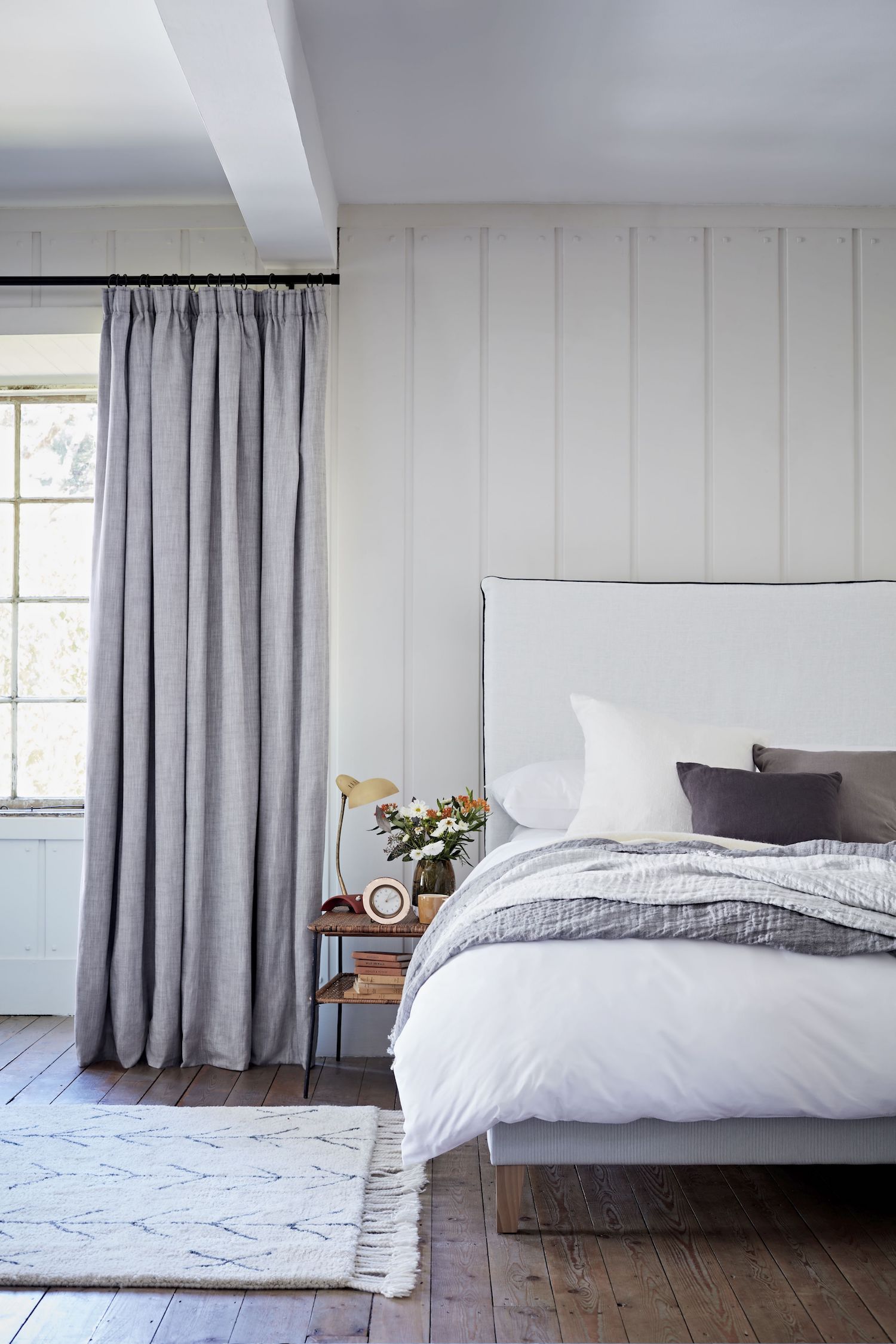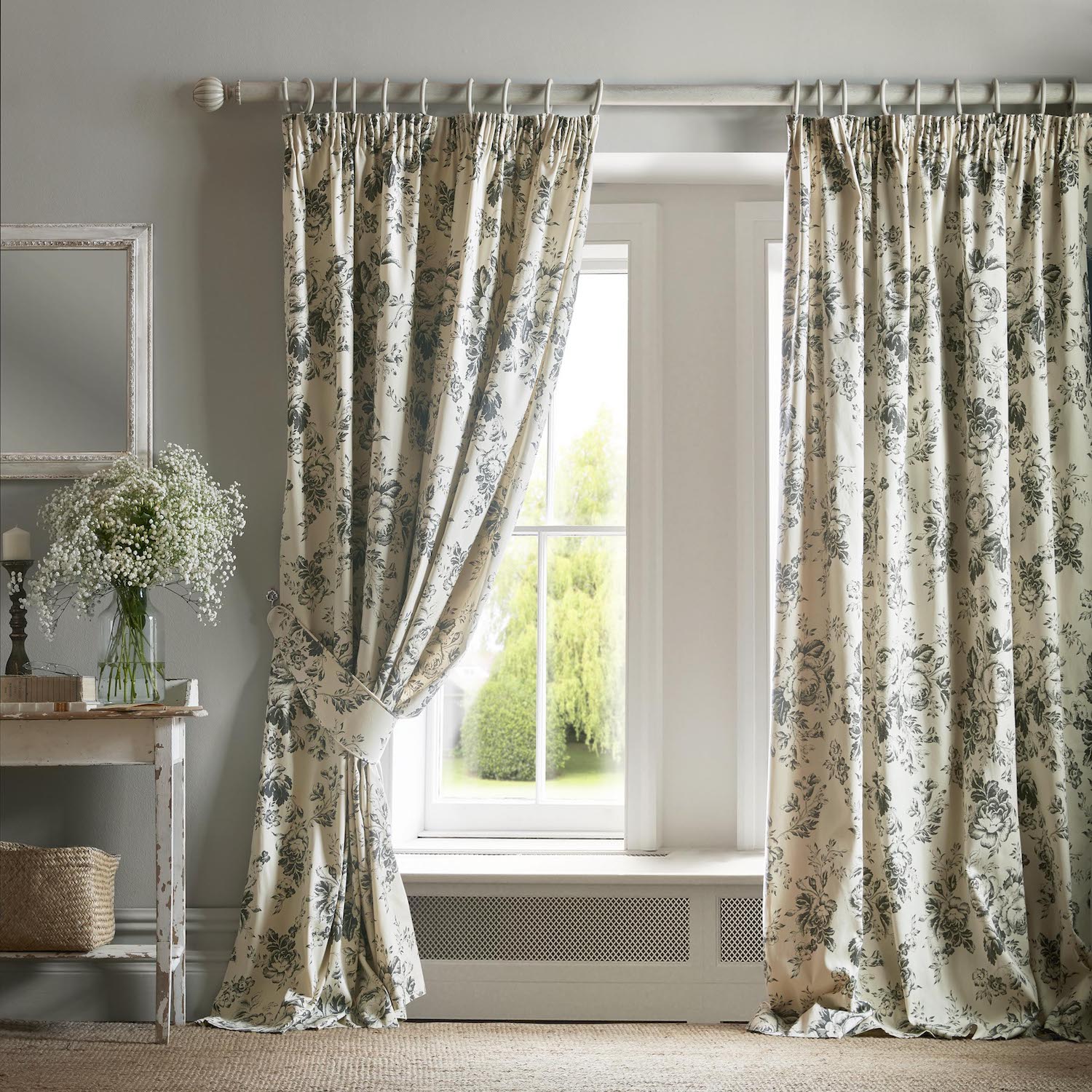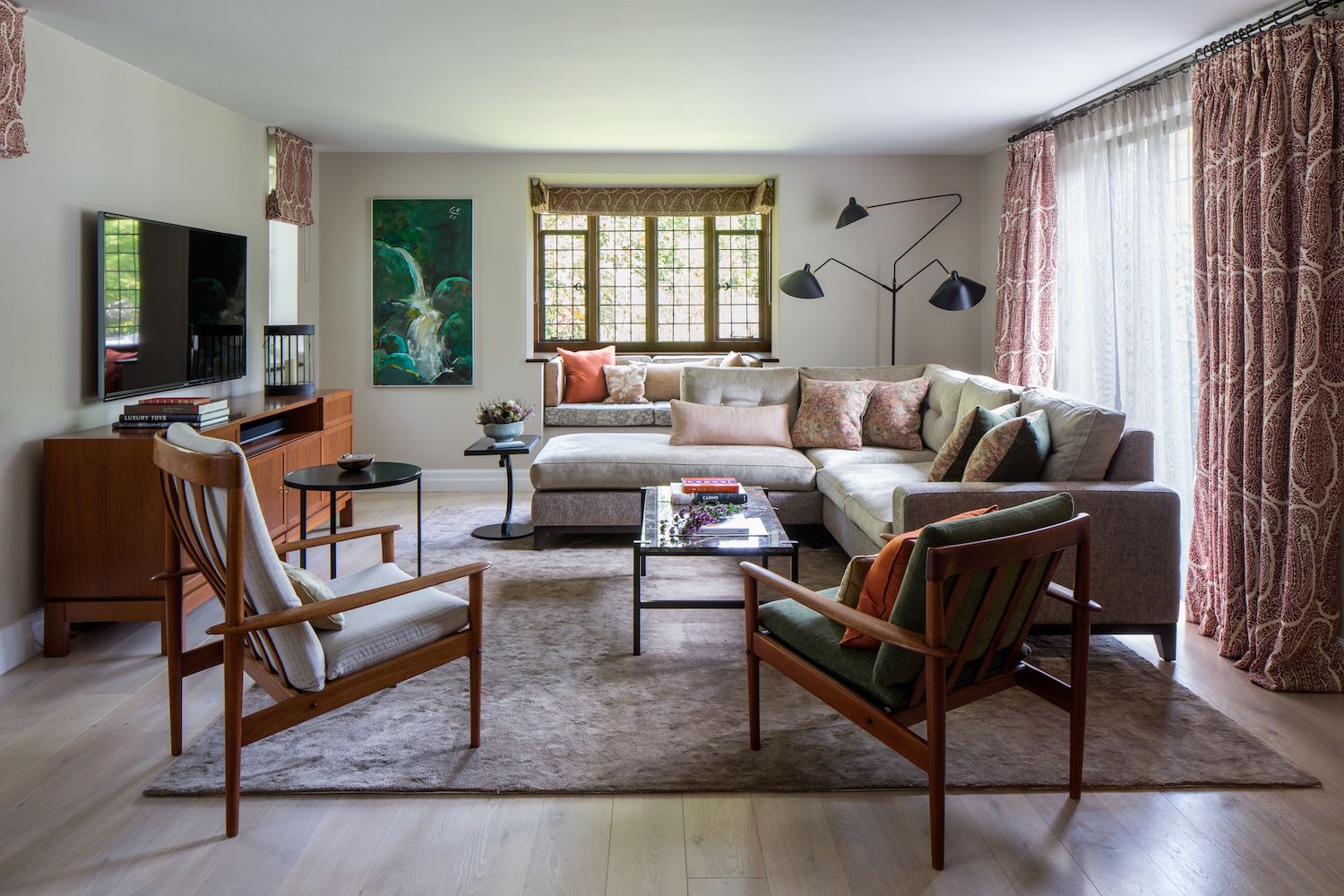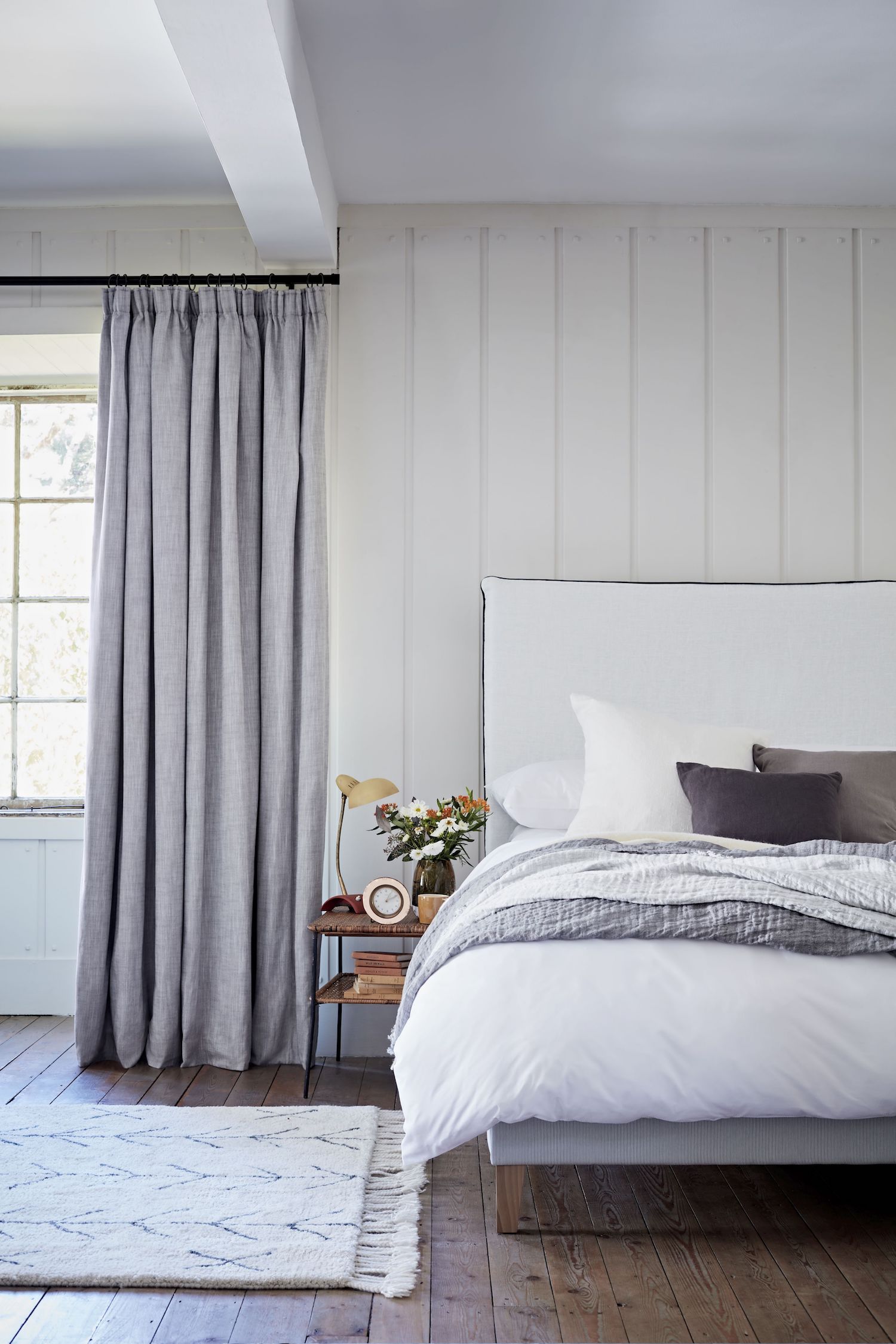How to hang curtains – everything you need to know
Learn how to hang curtains with our simple guide – it's easier than you think and can make such a difference to a room

Want to learn how to hang curtains? Well, there are lots of things you need to take into consideration. But we will talk you through each step so you can get your curtains up and looking fabulous in no time.
Firstly, take into account the overall look you want when deciding on your curtain length. Hanging panels higher than the window will add to the sense of height in a room. Measure from the top of the window (plus the added inches of height where the curtains will hang from) to the floor. For a more traditional look, with the curtain slightly puddled on the floor, add another two or three inches to your length. For a contemporary look, have the panel fall flush with the floor.
See also: How to measure curtains – a quick and easy guide to update your windows

How to hang curtains
- Measure, measure measure! That is the advice given below by Debbie Leigh, Design Manager of ILIV. “The first step to all DIY tasks is to gather all the tools you need and then measure, measure measure! “Measure your windows to make sure you get the correct size curtains and pole. To determine the length of the pole, measure the width of your window and add between eight to twelve inches. Measure from the spot you plan to hang the rod (usually four to six inches above the window) to the floor to figure out the length of the curtains. Add more length if you want your curtains to puddle on the floor.”
- Install Brackets. “Mark using a pencil and then drill holes for your brackets. Each bracket should be placed at the height you previously determined and about four to six inches from the edge of the window frame. Check to make sure your pencil marks are level otherwise the entire window treatment will be wonky. Screw in the brackets using a drill (If you have plaster walls or an especially heavy curtain or rod, ensure you have the correct fixings and wall plugs).”
- Install Rod and Curtains. “Ensure your curtains have been ironed or steamed to remove all the creases. Remove the finials from the curtain pole and thread the curtain onto the pole (depending on your curtain style, attach your curtains via the rings or eyelets). Depending on the type of bracket, you may need to place the pole into the bracket before replacing the finial. Some brackets may have a set of small screws to keep the pole in place, if so, tighten them too!”

- See also: bedroom curtain ideas
What is the proper height to hang curtains?
Hang curtains ideally 15cm above the window, or halfway between the top of the window and the ceiling, depending on the proportions of the room.
Overall, the proper height to hang curtains is very much dependent on the overall look you want to achieve but in the majority of cases, the fabric should always fall to or ‘kiss’ the floor.
For a romantic or traditional look you could consider drapes that puddle a couple of inches on the floor. However, you do need to consider the potential of them getting a little grubby at the bottom. Most importantly, avoid your curtains stopping a couple of inches above the floor. Not only does it look like you’ve got the measurements wrong, but it can also make the ceilings look lower.

- See also: living room curtain ideas
Where should curtain rod brackets be placed?
Curtain rod brackers should be placed around 15cms to the sides of the window on each side of the frame to allow space for your curtain to sit on the wall, and stack back from the window. Your curtains should always frame the window.
How do you hang curtains with rings?
Simply hook each curtain hook into the eyelet at the bottom of each ring.
How do you hang pencil pleat curtains?
- Start by tying the cords before you gather the curtains, do this by tying the cord at one end and ensure that the cord at the other end of the curtain panel doesn’t unravel. Once you have tied the cords, hold the loose cords at the untied end of the curtain panel and gently pull the cords to gather the pleats. Once you’re happy that the pleats are even and the panel is the correct width, tie the loose cords.
- Next, count the number of rings on the curtain pole and divide by two to work out how many rings you will have for each curtain panel, then evenly space the hooks along each panel, inserting them into the top row pockets for a pole and the bottom row pockets for tracks. Hook into each ring to hang your curtains.
How do you hang eyelet curtains?
The easiest curtains to hang are eyelets, as it’s as simple as hanging them on a pole.

Expert tips for hanging curtains
- When hanging curtains, make sure they are evenly spaced and attach the hooks you need with tape before lifting them to the track or pole - Elaine Penhaul, director and owner of Lemon and Lime Interiors.
- Hang the curtains high for a professional-looking window treatment. This will instantly give your room an illusion of extra ceiling height which in turn feels very luxurious. Ideally the pole or track should be positioned a minimum of 4 inches and a maximum of 12 inches above the top of the window. For drapes to look full, the panels should have a combined width of at around 2.5 times the window. Debbie Leigh, Design Manager ILIV.
- Spray the pole or track with a lubricant such as silicone spray to make your curtains open and close smoothly. - Kathryn Seidl, owner of klsinteriors.
- Bend the hooks on your leading and return edges closed so that they don’t jump off the rings when you open and close the curtains. - Kathryn Seidl.
- It’s hard to hold a curtain up and attach the hook at the same time so get a friend to help you to make sure this process is as easy as possible. - Elaine Penhaul, director and owner of Lemon and Lime Interiors
Be The First To Know
The Livingetc newsletters are your inside source for what’s shaping interiors now - and what’s next. Discover trend forecasts, smart style ideas, and curated shopping inspiration that brings design to life. Subscribe today and stay ahead of the curve.
-
 The 'New British' Style? This Victorian London Home Embraces Its Owners' Global Background
The 'New British' Style? This Victorian London Home Embraces Its Owners' Global BackgroundWarm timber details, confident color pops, and an uninterrupted connection to the garden are the hallmarks of this relaxed yet design-forward family home
By Emma J Page
-
 Muji Living Room Ideas — 5 Ways to Harness The Calming Qualities of This Japanese Design Style
Muji Living Room Ideas — 5 Ways to Harness The Calming Qualities of This Japanese Design StyleInspired by Japanese "zen" principles, Muji living rooms are all about cultivating a calming, tranquil space that nourishes the soul
By Lilith Hudson